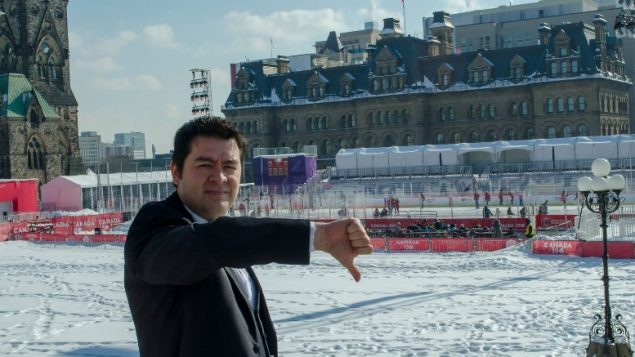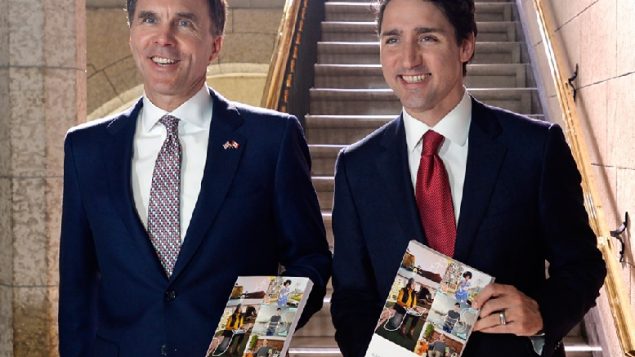You might be forgiven if you haven’t heard of the Teddy Awards, it’s not something that governments across Canada are eager to promote.
The Teddy trophies, resembling pigs are given out by the Canadian Taxpayers Federation (CTF), a not-for-profit organisation advocating against government waste of taxpayer’s money.
This is the twentieth annual event…celebration.. is not the right word, to highlight the most notable cases of government waste, on the federal, provincial, and municipal levels.
Aaron Wudrick is the federal director of the advocacy group, Canadian Taxpayers Federation
ListenTopping the list of this year’s “Teddy’s” is the federal government’s temporary outdoor skating rink created on the lawn in front of Canada’s parliament in Ottawa, The rink which will last only a couple of months will have cost taxpayers $8.2 million dollars. As the CTF pointed out, the expensive taxpayer funded rink is located only a couple of blocks from the famous Rideau Canal, billed as the longest outdoor rink in Canada, and possibly the world.

Aaron Wudrick on Parliament Hill with the temporary outdoor skating rink in the background, the big “winner” in this year’s awards for government waste. PHOTO- CTF
Full backgrounder on Teddy winners and nominees HERE
Provincial Teddy Winner: Ontario’s Fair Hydro Plan
The provincial winner was the Ontario government of Kathleen Wynne and her plan to reduce Ontarians’ hydro bills. However, instead it will end up costing ratepayers tens of billions of dollars. The plan, which involves Ontario Power Generation (OPG) borrowing  money to keep hydro rates relatively flat until 2021, will then see rates increase by 6.8% every year until 2027 in order to pay back the borrowed money with interest. The province’s Auditor General concluded that the plan would ultimately end up costing taxpayers an additional $39 billion ($18 billion in borrowed funds, plus $21 billion in interest costs)
money to keep hydro rates relatively flat until 2021, will then see rates increase by 6.8% every year until 2027 in order to pay back the borrowed money with interest. The province’s Auditor General concluded that the plan would ultimately end up costing taxpayers an additional $39 billion ($18 billion in borrowed funds, plus $21 billion in interest costs)
“Even for a government with a long track record of waste, this cynical act of kicking the can down the road is truly breathtaking,” noted Wudrick.
Municipal Teddy Winner: The City of Montreal’s Formula E
The City of Montreal spent $34 million trying to attract the Formula-E race, F1’s electric-powered cousin, even creating a new downtown circuit and buying new safety fences and equipment. The 2017 event was a flop, selling only 25,000 out of 45,000 tickets and featuring mostly empty bleachers.
“By any measure, $34 million on a race nobody wants to watch is not a winning formula,” said Wudrick.
Lifetime Achievement Teddy: The City of Calgary’s Gaffe-Prone Public Art Program
The City of Calgary has a long track record of wasting taxpayer dollars on public artwork stretching back to the inception of its public art policy in 2004, and Calgary public art projects previously garnered a Municipal Teddy nominee in 2015 and a winner in 2016.
Some of the more notable examples of artistic waste include Bearing, a $221,000 large metal ball/archway located behind a fence at the Calgary Fire Department’s repair and maintenance facility; Wishing Well, a five metre tall interactive steel sphere which was supposed to translate text messages into unique lights and sounds (but didn’t) and on one occasion reflected the sun’s rays to burn a visitor’s jacket; Travelling Light (giant blue ring), a $470,000 giant blue ring with two lampposts on top of it.
Forest Lawn Lift Station (aka the “poop palace”) a $246,000 wastewater station which embedded LED lights that change color; and Bowfort Towers, which features steel beams which are intended to look rusty but has been criticized as looking like “bombed out ruins.”
“Art can be a wonderful thing, but Calgary’s long track record of expensive artistic flops highlights the perils of mixing art and government,” noted Wudrick. “We’re pleased the city is currently reviewing the policy, but it needs to be dumped.”
Other nominees included:
Federal – Finance Canada for spending $192,000 on graphics and advertising for the federal budget.
Federal – Health Canada for spending $100,000 per year to operate the minister’s Twitter account.
Provincial – Danny Graham, CEO of Engage Nova Scotia for getting a $163,000 salary despite not being able to explain what Engage Nova Scotia does.
Provincial – SaskPower for previously maintaining a fish pond in its Regina headquarters at an annual cost of $20,000.
Municipal – The Toronto Transit Commission for its $1.9 million “word art” project that remains dormant due to fears passengers will use to type profane words.
Municipal – The United Firefighters of Winnipeg for taking a 40% taxpayer subsidy for their union president’s salary
And finally, Nominated for: Most Expensive Budget Cover Art

Finance Minister Bill Morneau and Prime Minister Justin Trudeau proudly display copies of the federal budget on March 22, 2017: Almost $200,000 was spent just on the cover art. PHOTO: The Canadian Press – Adrian Wyld
Cost: At least $192,000
Documents obtained under the Access to Information Act revealed that the Department of Finance spent at least $192,000 on graphics and advertising related to the 2017 budget, including $89,500 on talent fees for photos and models, and $24,990 for a photo shoot for four images on the hard-copy budget cover.
Emails between various Finance officials also documented the extensive back-and-forth over such details as the colour scheme, the ethnicities of the models and whether or not one model should wear glasses.
The 2017 budget projected a deficit of $28.5 billion.







For reasons beyond our control, and for an undetermined period of time, our comment section is now closed. However, our social networks remain open to your contributions.